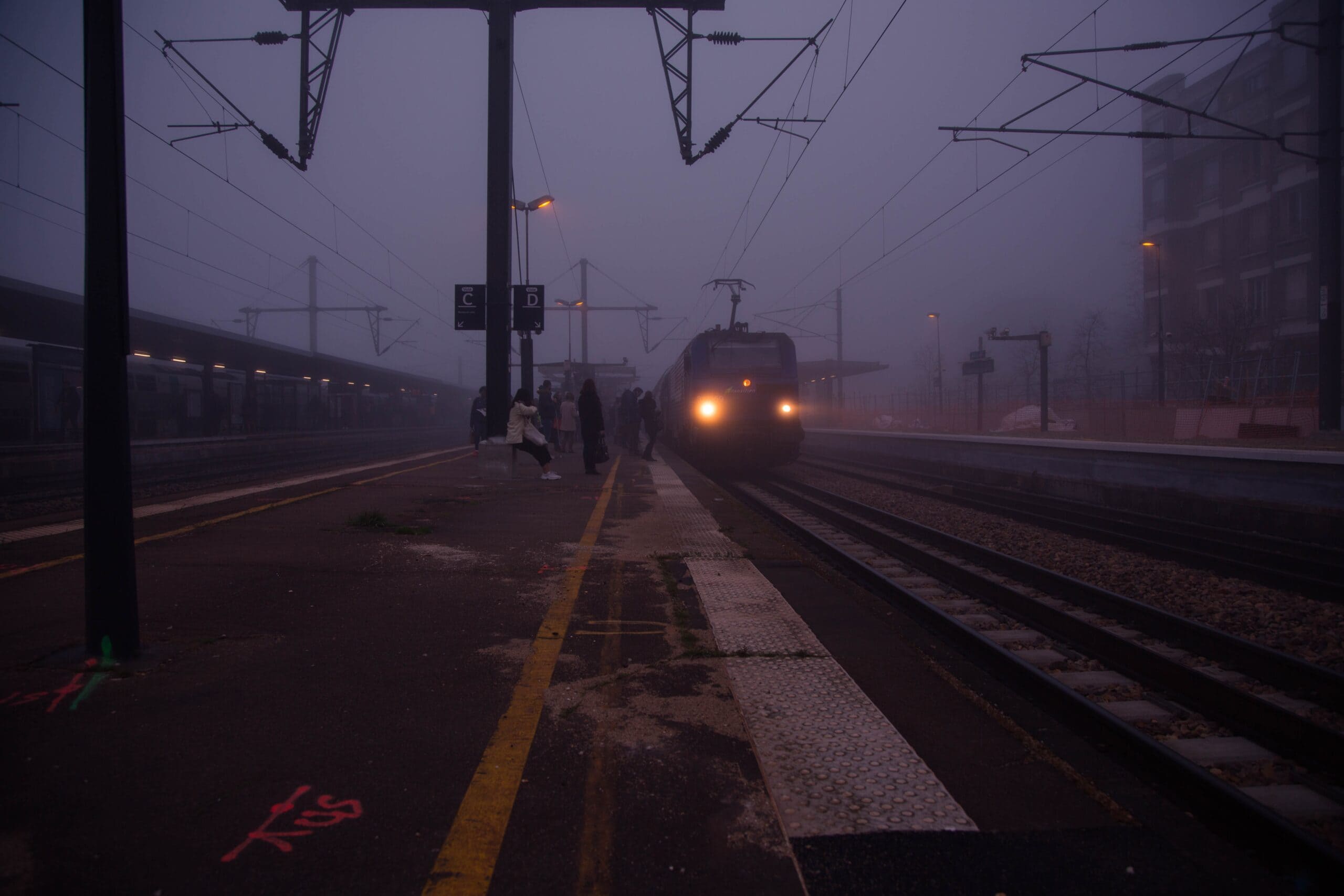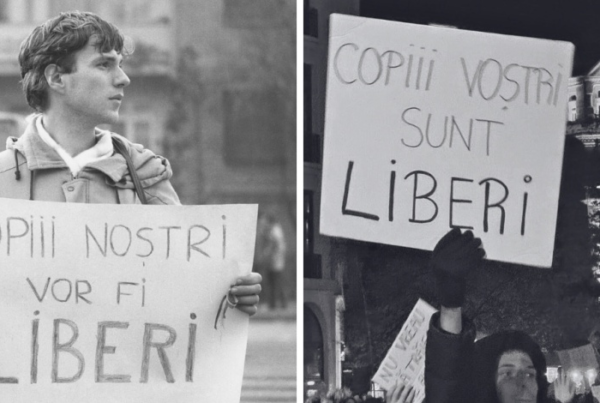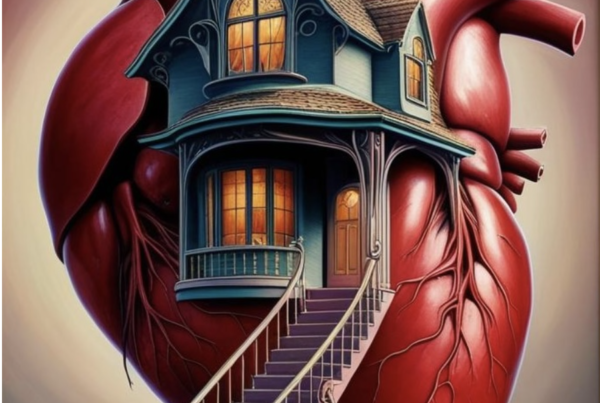By Jennifer Su
Car 7, seats 10 to 18, Ferro-home train no. 2716, I should probably hurry up.
I repeat the sequence of numbers under my breath, timing every other syllable to match the slap of my shoes against the cobblestone. My breath turns into heaves, my pace quickens as I hurry past the light posts lining the sides of a descending escalade of stairs, past the round-about, across a concrete skatepark framed by a small garden. The grand analog perched on a fountain top glows out the hour to me against the inky sky, already dark from having abandoned the golden ember of the sun, blaring the time in my face as my footsteps accelerate.
I weave my way between rows of people taking their time and past the glass doors of the ferro-home station, excusing myself as I enter a sharp left turn toward platform D. The duffle bag slung over my left shoulder grazes some other bags on my way to the front. I apologize profusely.
The air conditioning blasts against my face. Inside, the building appears rather unremarkable. The amenities are still pristine, the signs still crisp, the screens still scratchless, more or less expected of a station this young. From the outside, however, one could behold it as a rather impressive structure – the height of the Maritime Tower in Wellington, an area of twenty-five thousand square meters, and the depth of two football fields turned vertically – impressive, at least, by outer-city standards. The ferro-home boarding station sits just outside the city’s secondary perimeter, where it looms amongst other skyscrapers that it shoulders. In a metal jungle of Marinas, Burj Khalifas, and towers, giants begin to resemble dwarves.
At the time of its construction a few years back, the inconvenience of its location was rather secondary – perhaps that was why it was located past the second ring of buildings surrounding the city center – since there was no room left in the central districts for new architecture or for new city-goers. City Hall had tripled its budget for communal transportation to reroute tracks and to build new transport cars in response to a regional referendum to renovate the overcrowded urban area. It was only after two massive protests had brought the economy to a standstill that the urban projects were expedited. People were nearly stacked on top of one another trying to walk down the sidewalk or enter a metro, clinging onto the backs of buses to get to work and pushing each other into traffic. A dozen or so people were dying every day from some congestion-related accident. Some students even ran a death toll counter available for download that I had kept on my phone, but the application vanished from my screen after being shut down by city authorities. But even with a new city plan designed to be run on clean energy and calculated with mathematical efficiency, the cost of urban living had become far out of reach for the ordinary metropolitan salary. Most of all, the city was still out of space.
This young station, as well as its eleven sister stations, are supposedly part of the solution. As I cross a series of posters advertising an upcoming jazz festival along one of its ribbed walls, I hear the minute whistle from the conductor ring out. I coast down the glossy platform with my laptop bag snuggly under my elbow and dive onto the nearest compartment beside me. Better to take the aisle than to miss my night train. Car 3, reads the digital plaque mounted above a second door. Slightly uncomfortable of a walk, but missing the train entirely would have been undoubtedly, considerably worse. It was my home, after all.
Between Cars 4 and 5, and every four cars after that, is a small kitchen and bar. A group of people are typing away at their computers while my neighbor who lives three ferro-home doors down dices a red onion. I wave hello. He must notice my panting as his face curls into a concerned expression.
“Made it with thirty seconds left,” I let out. Lucky.
He raised a glass cup from the pantry holder. “Sounds like you’ll need a drink tonight.”
He missed his ride a few weeks ago. Once, and never again, he said. He was downing two shots of whisky and a 50cl beer at the bar across while telling me about it, and I don’t blame him one bit.
“The bikeway I usually took was closed off due to some sort of bus accident. Missed it by a minute, at most,” he swore. He shook his head, eyes fixed on a spot on the bar counter.
“Friends’ places were full?”
“Asked around, but most people’s ferros depart before ours. Ended up taking a hostel train for the night,” he sighed. “But at least there was that.”
At least there was that. I nodded in agreement and offered my condolences.
It had been drilled into all of our minds by parents, teachers, and neighbors to avoid being late to the night train as if our lives depended on it. Certainly, it was an annoyance to miss a commuting train, bus, appointment, or anything of any sort, but missing the night train meant having to find another place to sleep – in a city where vacancy was so extraordinarily rare. I remember hearing horror stories about choosing between hotels going for 650 a night or trying to find a half-comfortable, relatively sanitary spot. You’d have hit gold to find a place near an unguarded building, they say. But even if you managed to squeeze between the backs of two alleys, a law mandated that you could be arrested on the spot past two o’clock, and a heavily enforced law at that.
“Though honestly I’m surprised you even got a hostel spot,” I wondered aloud. “Of course, it’s great that you did, but surprising still.”
“No, I was shocked too. Maybe it was my suit and tie or a last minute cancellation, or a no-show if they were held up by the accident, too…” he frowned. “If someone actually missed that train, I can only hope they’re alright. Maybe they stayed in the metal scrap yard.”
I shivered at the thought. Even rural tourists knew the night train schedule was never something to be taken lightly.
“Must’ve been terrible, I’m sorry.”
We wrap up our exchange for the evening, and I resume my passage through the aisle. Through the few windows still left uncovered by velvet curtains, I watch as the vivid colors of the city’s historic district transform into a monochronic view of rust and steel; designs of acanthus leaves and scrolls begin to morph into crystalline towers, then a series of less elaborate designs and temporary silos, the metropolitan palette growing dimmer as we glide toward the night district. There, the train will be parked alongside other resting night trains, each ferro-home folded against another, little mobile apartments we call our homes.
I fetch the key from my back pocket and press the switch of a small lamp. The room is just as I had left it the night before – two pillows at the head of the bed, a square desk with papers scattered across, a few cables still plugged into the two sockets. In my pajamas, I hoist myself onto my bed and slide open a narrow strip of window near the ceiling. My eyelids fall under the weight of the cool air flowing in. Glad to have made it on time, I think to myself, and allow the gentle sway of the train to lull me to sleep.
Other posts that may interest you:
Discover more from The Sundial Press
Subscribe to get the latest posts sent to your email.





